SM U-32 was a German Type U 31 U-boat of the Imperial German Navy.
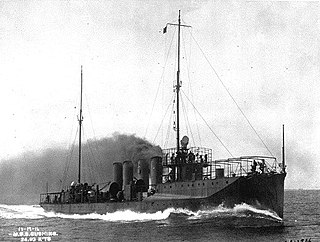
USS Cushing was an O'Brien-class destroyer built for the United States Navy prior to the American entry into World War I. The ship was the second U.S. Navy vessel named in honor of William B. Cushing, a U.S. Navy officer best known for sinking the Confederate ironclad warship CSS Albemarle during the American Civil War.
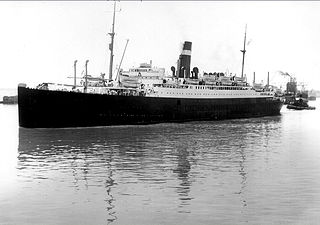
SS Athenia was a steam turbine transatlantic passenger liner built in Glasgow, Scotland, in 1923 for the Anchor-Donaldson Line, which later became the Donaldson Atlantic Line. She worked between the United Kingdom and the east coast of Canada until 3 September 1939, when a torpedo from the German submarine U-30 sank her in the Western Approaches.

German submarine U-48 was a Type VIIB U-boat of Nazi Germany's Kriegsmarine during World War II, and the most successful that was commissioned. During her two years of active service, U-48 sank 52 ships for a total of 306,874 GRT and 1,060 tons; she also damaged three more for a total of 20,480 GRT over twelve war patrols conducted during the opening stages of the Battle of the Atlantic.
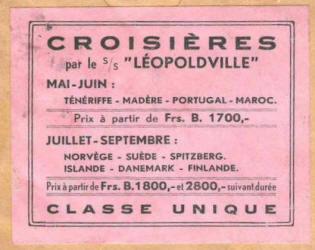
SS Léopoldville was a 11,509 GRT passenger liner of the Compagnie Belge Maritime du Congo. She was converted for use as a troopship in the Second World War, and on December 24, 1944, while sailing between Southampton and Cherbourg, was torpedoed and sunk by the German submarine U-486. As a result, about 763 US soldiers and 56 of the ship's crew died.

SS Tuscania was a luxury liner of the Anchor Line, a subsidiary of the Cunard Line and named after Tuscania, Italy. In 1918 the ship was torpedoed and sunk by the German U-boat UB-77 while transporting American troops to Europe with the loss of 210 lives.

SS California was a twin-screw steamer that D. and W. Henderson and Company of Glasgow built for the Anchor Line in 1907 as a replacement for the aging ocean liner Astoria, which had been in continuous service since 1884. She worked the Glasgow to New York transatlantic route and was sunk by the German submarine SM U-85 on 7 February 1917.

SS Vaderland was an ocean liner launched in July 1900 for the Red Star Line service between Antwerp and New York. During her passenger career, the ship initially sailed under British registry, but was re-registered in Antwerp in 1903. Vaderland was a sister ship to Zeeland and a near sister ship to Kroonland and Finland.
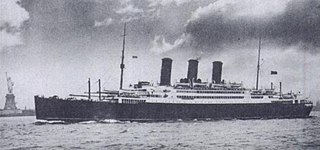
SS California was a British 16,792 GRT steam turbine ocean liner built in Glasgow in 1923 for the Anchor Line. She was a sister ship of Cameronia, Tyrrhenia, Tuscania, Transylvania and Caledonia. In 1939 the Royal Navy requisitioned her. She was bombed and abandoned along with the Duchess of York west of Spain by a Luftwaffe attack in July 1943.
SS Dundee was a British steamship that was built in Scotland in 1911 and sunk by enemy action in the Celtic Sea in 1917. She was designed as a coastal passenger and cargo liner for the Dundee, Perth & London Shipping Company Ltd, but in 1915 she was converted into an armed boarding steamer for the Royal Navy. She took part in the Action of 16 March 1917, was sunk by a U-boat six months later, and lost members of her crew in both actions.

The Mediterranean U-boat Campaign in the Mediterranean Sea was fought by Austria-Hungary and German Empire against the Allies during World War I. It was characterised by the ability of the Central Powers to raid with near impunity during the first years of the war, causing substantial shipping losses, until the introduction of the convoy system allowed the Allies to drastically cut their losses from 1917 on.

HMS Attack was an Acheron-class destroyer built in 1911, which served during the First World War and was sunk in 1917 in the Mediterranean by a German U-boat. She was the third ship of the name to serve in the Royal Navy.

HMS Rifleman was an Acorn-class destroyer built by J. Samuel White & Company, Cowes, completed on 4 November 1910 and sold for breaking up on 9 May 1921.

HMHS Dover Castle was a steam ship originally built for the Union-Castle Line and launched in 1904. In 1914 she was requisitioned for use as a British hospital ship during the First World War. On 26 May 1917 she was torpedoed 50 nautical miles North of Bône, Algeria by UC-67 of the Imperial German Navy.
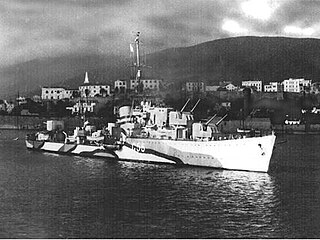
HMS Lightning was an L-class destroyer of the Royal Navy. She was launched on 22 April 1940 and sunk on 12 March 1943 by German Motor Torpedo Boat S-55.
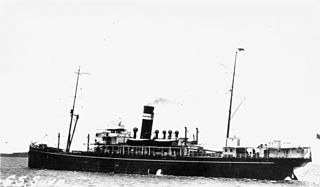
An armed boarding steamer was a merchantman that the British Royal Navy converted to a warship during the First World War. AB steamers or vessels had the role of enforcing wartime blockades by intercepting and boarding foreign vessels. The boarding party would inspect the foreign ship to determine whether to detain the ship and send it into port or permit it to go on its way.
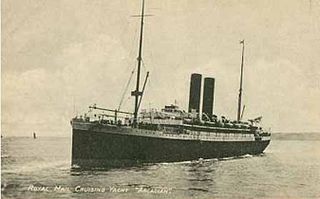
SS Arcadian was an ocean liner launched in Barrow-in-Furness in 1899 by Vickers, Sons & Maxim Ltd for the Pacific Steam Navigation Company as Ortona. She was renamed Arcadian when the Royal Mail Steam Packet Company acquired her in 1906. She was chartered for the Royal Navy in 1915, and was sunk by a U-boat in 1917.

Anchor Line was a Scottish merchant shipping company that was founded in 1855 and dissolved in 1980.
Several vessels have been named Cadmus.
















